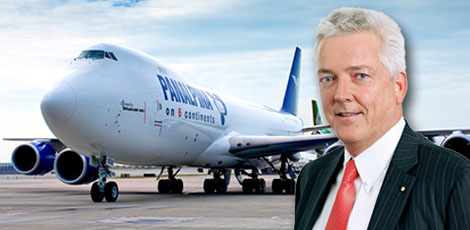Aviation consultants hired by the city of Dallas have concluded that Southwest Airlines would be the city’s best choice to get two available gates at Dallas Love Field.
L.E.K. Consultants said the “city’s main objective” should be to maximize the number of passengers originating or ending their trips at Love Field and Dallas/Fort Worth International Airport, “as that would represent maximum utility for stakeholders.”
“Based on fleet plans and potential cannibalization at D/FW, Southwest would likely drive the most passenger traffic across both DAL [Love Field] & D/FW,” the consultants said in a report to the city.
The Dallas City Council’s Transportation and Trinity River Project Committee is scheduled to discuss the Love Field gates Monday afternoon.
American Airlines Inc. is required to divest the gates as part of a lawsuit settlement with the U.S. Department of Justice, which had sued American and US Airways Inc. in 2013 to block their planned merger.
The Justice Department has told American that it wants Virgin America to get the gates, which are among 20 gates in the new Love Field terminal nearing completion. Twelve of the gates are already in use.
The work is scheduled to be done before Oct. 13, the date that federal restrictions on Love Field flights expire. After that date, carriers can fly to any U.S. airport out of the Dallas airport, ending more than 34 years of limited service.
Southwest, which controls 16 of the new gates, is lobbying for the two American gates as well. Southwest has already named 15 cities that would get nonstop service when the federal limits expire, and promised service to 17 additional cities if it got the extra gates.
Delta Air Lines Inc. also is pushing to be able to fly out of Love Field, even though the Justice Department said March 10 that the Atlanta-based carrier was “not an appropriate divestiture candidate” for the Dallas gates.
Virgin America chairman Don Carty and chief executive David Cush on Friday said they had approval from the Justice Department and American to get the gates, and said they expected City Manager A.C. Gonzalez to approve the transfer of the gates. Virgin America started offering introductory $79 nonstop fares out of Love Field on Friday.
Carty called the lease transfer “a relatively routine matter. I don’t know that this city has ever interfered with the transfer of a lease between two private parties.”
“I think it’s pretty clear that these transfers get approved unless there’s an overwhelming reason not to approve them,” Carty said. “And we’ve seen transfers of Love Field gates to parties that are far less credible than a Virgin America.”
In briefing material to the council committee, the city staff indicated that Justice has made its wishes known.
“On April 16, 2014, the City received notice from the Department of Justice that American and Virgin America had reached an agreement and that agreement satisfies the Department of Justice,” the briefing paper stated.
L.E.K. said that the decision on the gates should be based on what’s best for the “primary stakeholders” — Dallas residents and the local business community. It said its analysis did not include American and the Justice Department.
“We have excluded ‘other stakeholder’ considerations from our analysis in order to remain objective; the DOJ’s needs do not necessarily overlap with the needs of the primary stakeholders,” the L.E.K. report said.
The consultants said Southwest likely would add the most destinations and “drive the most passenger traffic” at the two airports. While Virgin America plans 18 daily departures at Love Field, it will take its six departures away from D/FW Airport. The report also raised the question of whether Delta’s 22 flights at Love Field would cannibalize its D/FW operations.
It assumed that Delta would operate only 20 flights a day from the two gates, although Delta has scheduled 22 flights.
(Terry Maxon - The Dallas News)













